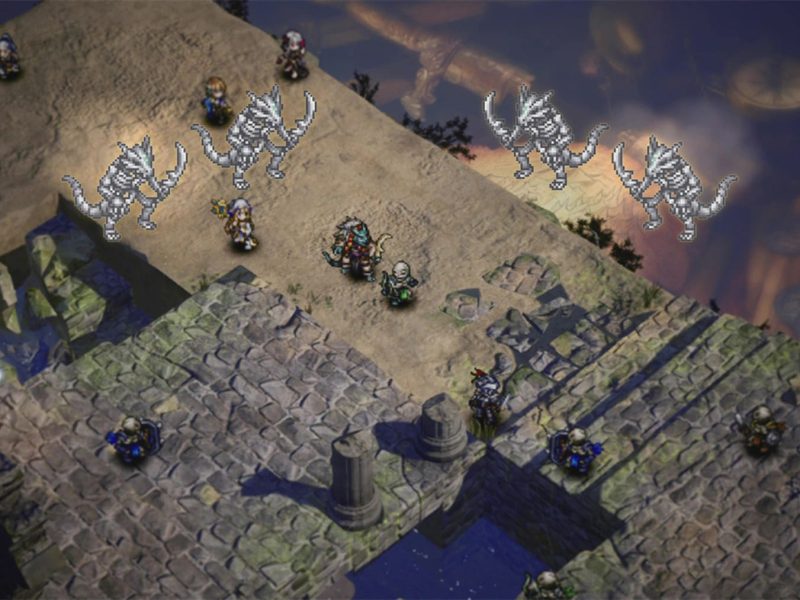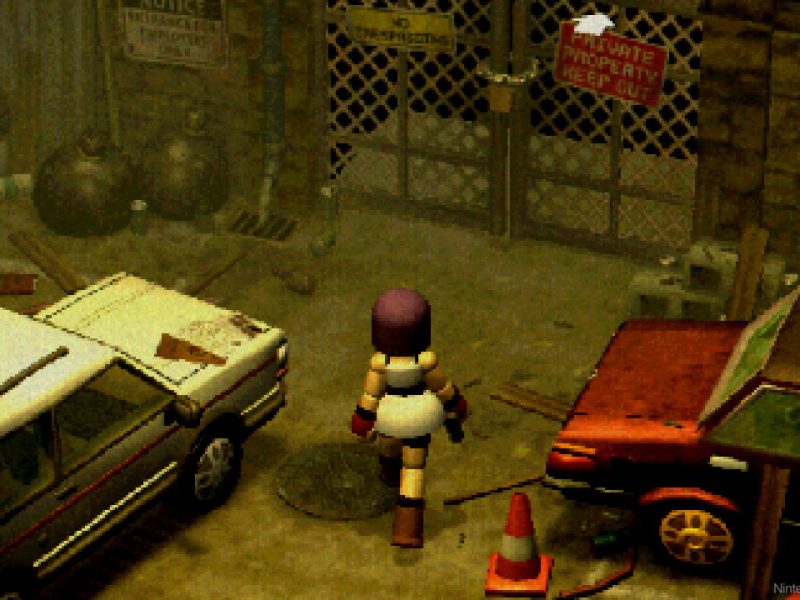An SRPG roguelike dish in need of more seasoning.
Monster Menu: The Scavenger’s Cookbook is a game made up of many appealing ingredients. It’s a roguelike strategy RPG dungeon-crawler with an anime art style and crafting mechanics. If you asked me to build a game out of buzzwords that appeal to me, Monster Menu would come close. However, it came out not quite matching the promise of its winning concept, a bit half-baked if you will (I apologize for any and all food puns in this review).
Made by Nippon Ichi Software (NIS), makers of games like the Disgaea series, Monster Menu takes place in a fantasy setting where your character has gone to explore a dungeon. However, through poor planning and getting lost, your character is at death’s door at the start of the game, with no food or supplies. Eventually, you come across a dead monster, whose arm you chow down on, despite clearly being disgusting. The name of the game here is survival using the materials at hand, which in this case are monster parts.
Shortly after this intro, you build out the rest of your party using standard fantasy character classes, set up a base camp, and explore a procedurally generated dungeon. The dungeon is made up of individual floors that you can rest between, and on the 10th floor there is a boss fight. The next floor after that starts a new biome. Exploration takes place in roguelike fashion – you go through floors, fighting enemies for as long as you can, and once you die you go back to floor one and start over at level one, keeping your equipment with you. You then start from scratch.
The combat is that of a grid-based SRPG that forms when you run into a monster on the map, and then contains all the monsters that are in the vicinity. This leads to some strategy before you even join a fight, because you determine how many enemies you want to fight and can attempt to get the advantage by sneaking up on them. If you run into an enemy from behind to sneak up on them all the members in your party can move first (however, the enemies can do the same to you). Without any advantage, the turn order is based off of speed. The rest of combat involves turn-based attacks and skills, using your positioning to your advantage. The one unusual menu option during a fight is Devour. When you defeat an enemy, its body will still be in the grid, and if a character chooses the Devour option, it will consume that enemy, gain back some health, and also gain some skills for the particular battle it’s in. It’s a neat idea, but since it takes a turn, the health recovery could be marginal, and because the skills wouldn’t carry over, I found myself not using this as much, especially since this would consume any of the items you would be able to loot from the enemy.

The food mechanic doesn’t stop there. The only healing items are food and water, which you can eat or drink in the field for a basic boost if need be. However, it’s almost always a better option to save your items for your rest areas between levels, where you can rest to heal at the expense of your hunger and thirst meters, which are also constantly draining. While at camp, you can cook items based on a variety of recipes, which not only make you less hungry or thirsty but also give you stat boosts and passive skills for the rest of the run. Ingredients also have a freshness meter before they go bad and since all of your ingredients are things you looted from monsters, different food items can actually affect your happiness meter, which temporarily lowers your stats. Ultimately, the cooking mechanic becomes a constant balancing act where you are trying to make sure all of your characters survive, while also improving your stats and handling all these meters. There’s also a simple crafting mechanic as well where you can improve and repair your items. Monster Menu is all about balancing several different meters and stats which ends up becoming a true juggling act, where if things are going well you can optimize your characters based off of strategy, but if you are having a difficult run you might be struggling just to keep your characters fed.
The presentation is solid – the art style is a cute chibi anime art style that allows for customization while you create your characters, and the music is repetitive but good. The biggest issue with the presentation were the repetitive voice lines. When each floor has several different points where you can loot monsters or gather items but only a small handful of lines for that, it gets borderline annoying to the point where I often played the game on mute, if only to not hear my character go “could this be?” every time I opened a chest. That said, I do like the art style, and the presentation of some of the more disgusting menu items; there’s even an option to censor particularly gross items, which is a nice touch.

The biggest issue with Monster Menu is just how repetitive every run can be. Each floor’s map might have a different layout but roughly the same enemies. Because you are running the same characters you created at the start, you can’t experiment with different classes without starting a new game, so the gameplay constantly feels the same – there isn’t the joy of experimenting with different builds that makes me love roguelikes. There isn’t much you can do to play with builds, and rarely did I lose feeling like I at least learned something new, understanding a way to improve my strategy or gameplay and get just a little bit further. Ultimately, it felt like the only thing driving progress in Monster Menu was getting marginally better loot, and it’s not a particularly compelling hook.
Storywise, there is very little beyond the intro as I described earlier and some notes you can pick up about another party that aren’t particularly interesting, certainly not enough to entice players to push ahead. The game also had a few crashes on Switch, which was frustrating. This only happened a handful of times throughout my time with Monster Menu, so it wasn’t a pervasive issue–and the game does have an autosave feature–but it was demoralizing for a game I was already not enjoying very much.
Monster Menu: The Scavenger’s Cookbook is frustrating because I feel like there could be a good game in here. In fact, if NIS decided to put out a sequel, I might be inclined to check it out because they have made a number of excellent RPGs in the past. It just feels like they threw in so many systems, meters, and mechanics that they forgot to put in something to compel you to keep playing. There are many better games out there in all of the genres that this one borrows from that despite interesting ideas, Monster Menu can’t come together to provide a satisfying meal.


